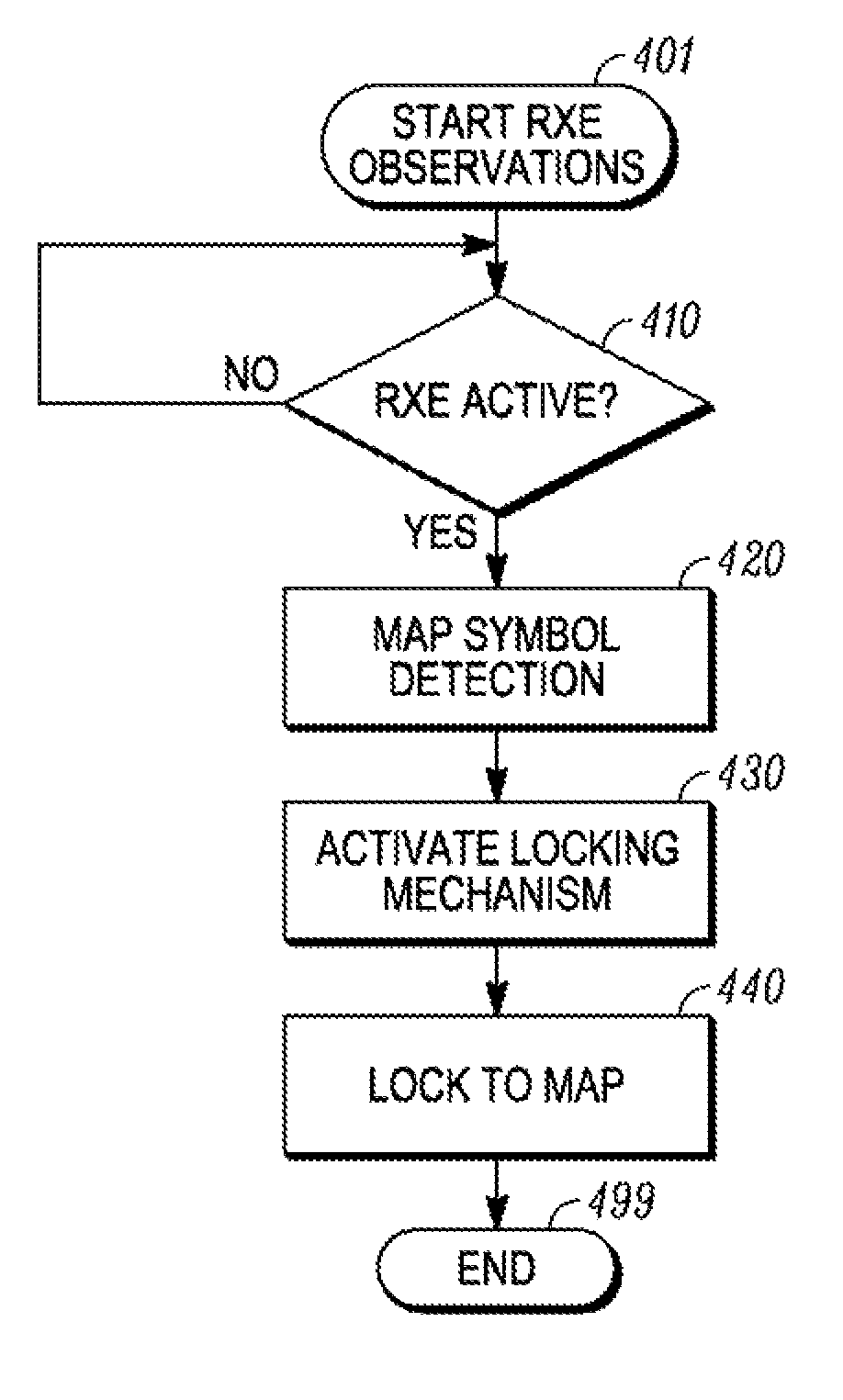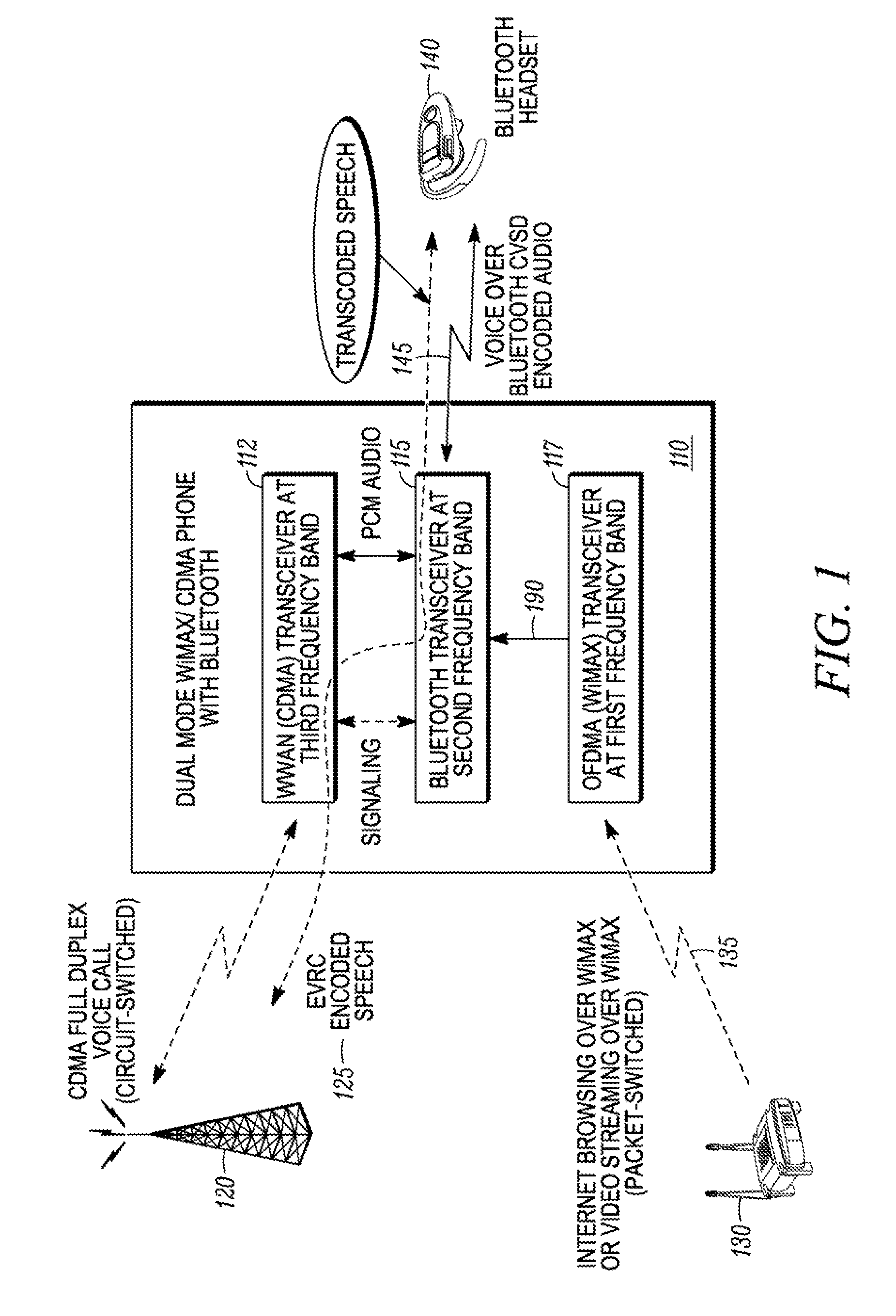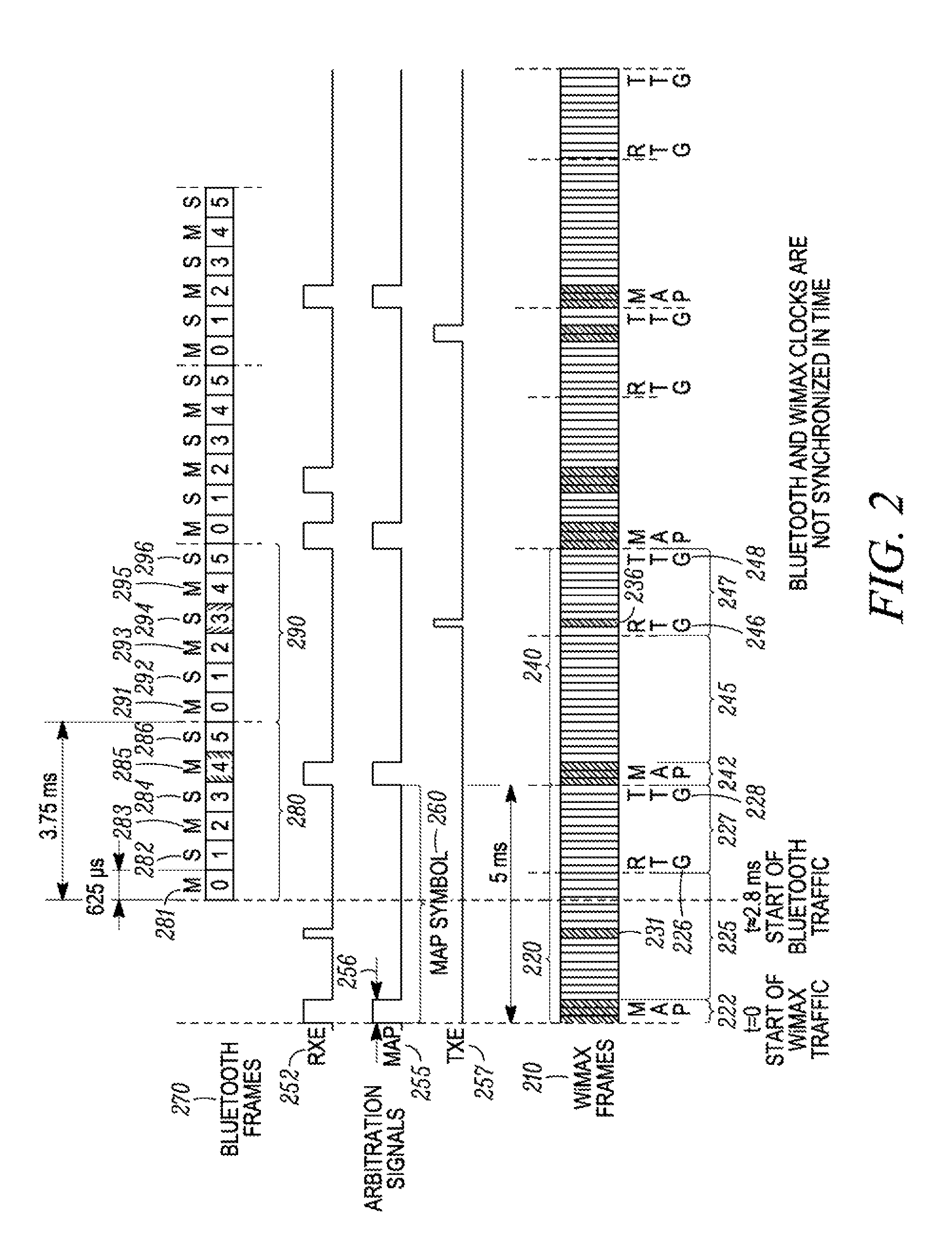Method and apparatus for coexistence
a technology of coexistence and coexistence, applied in the field of coexistence, can solve the problems of interference between adjacent channels, receiver de-sense, interference with internal communication, etc., and achieve the effect of little flexibility in delaying one technology's transmission relative to the other technology's reception
- Summary
- Abstract
- Description
- Claims
- Application Information
AI Technical Summary
Benefits of technology
Problems solved by technology
Method used
Image
Examples
Embodiment Construction
[0021]A method for coexistence of an orthogonal frequency division multiple access (OFDMA) receiver with a synchronous frame-based transmitter takes an estimated media access protocol (MAP′) signal indicating when a MAP message is expected to be received by the OFDMA receiver and sends the MAP′ signal to the synchronous frame-based transmitter to shut down the synchronous frame-based transmitter when a MAP message is expected to be received. If a MAP′ signal is not directly available from the OFDMA receiver, a frequency, phase, and duration of a future MAP symbol (in the MAP′ signal) can be determined from an OFDMA receiver-enable (RXE) signal by using techniques such as microcontroller unit interrupt measurements, Fast Fourier Transform, cross-correlation, and / or symbol timing recovery such as delay-locked loop.
[0022]One type of OFDMA system is a WiMAX system in accordance with IEEE 802.16e. Because a single frame size is commonly used today for WiMAX systems (and one MAP message i...
PUM
 Login to View More
Login to View More Abstract
Description
Claims
Application Information
 Login to View More
Login to View More - R&D
- Intellectual Property
- Life Sciences
- Materials
- Tech Scout
- Unparalleled Data Quality
- Higher Quality Content
- 60% Fewer Hallucinations
Browse by: Latest US Patents, China's latest patents, Technical Efficacy Thesaurus, Application Domain, Technology Topic, Popular Technical Reports.
© 2025 PatSnap. All rights reserved.Legal|Privacy policy|Modern Slavery Act Transparency Statement|Sitemap|About US| Contact US: help@patsnap.com



